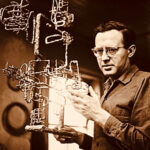Jackson Pollock
Jackson Pollock, an American painter and a major figure in the Abstract Expressionist movement, is best known for his innovative and influential technique of drip painting. His work and methodology not only redefined the boundaries of abstract art but also cemented his position as one of the most significant artists of the 20th century.
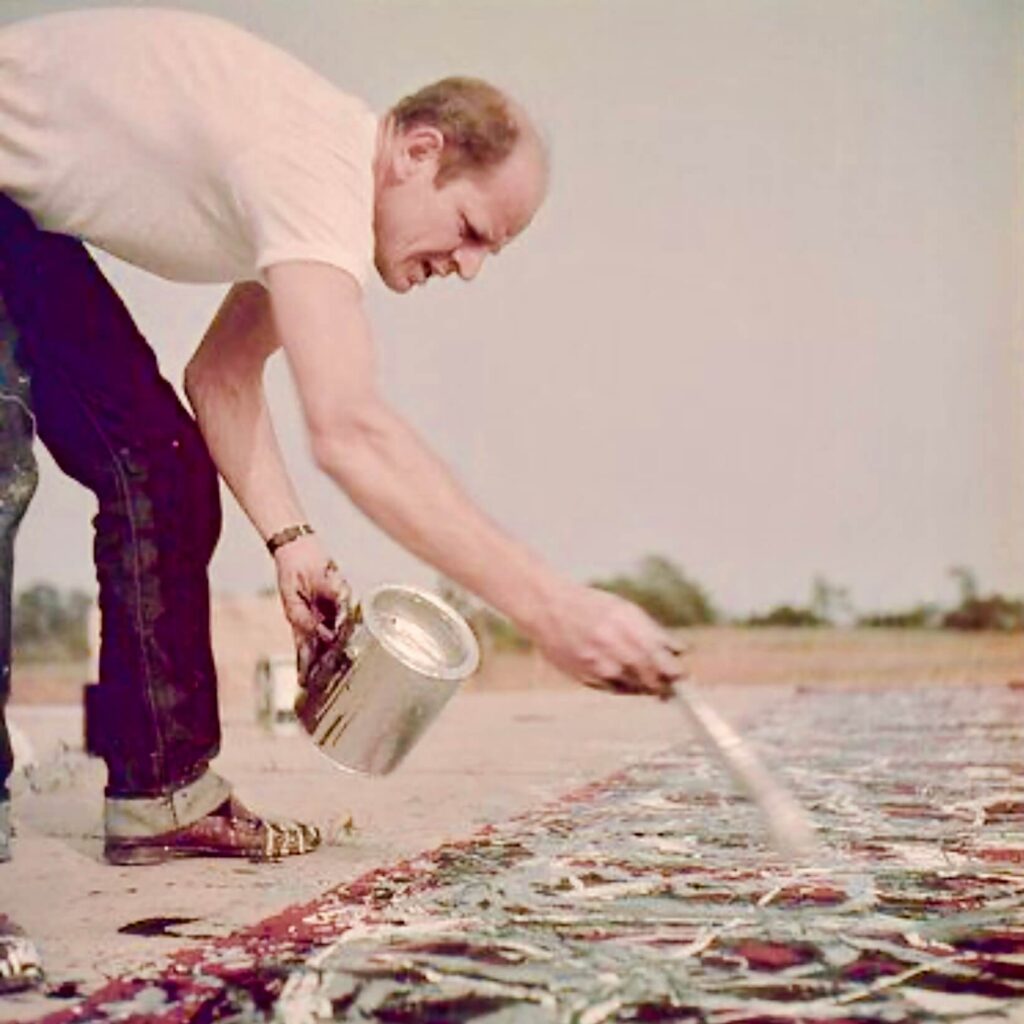
Early Life and Artistic Beginnings
Paul Jackson Pollock was born on January 28, 1912, in Cody, Wyoming. He was the youngest of five brothers, and his family moved frequently during his childhood, living in Arizona and California. Pollock’s early years were marked by instability and a search for identity, themes that would later emerge in his art.
Pollock began his formal art training at the Manual Arts High School in Los Angeles. In 1930, he moved to New York City to study under Thomas Hart Benton at the Art Students League. Benton, a leading American Regionalist painter, had a significant influence on Pollock, not so much in style but in the sense of movement and rhythm in his compositions.
The Formation of His Style
In the early 1940s, Pollock’s style began to evolve under the influence of Surrealism and Mexican muralists like David Alfaro Siqueiros. He experimented with automatic drawing—a technique that seeks to express the subconscious—and became deeply interested in Jungian psychology, which explored the collective unconscious.
Pollock’s early works from this period, such as “The She-Wolf” (1943) and “Mural” (1943), show a transition from figurative to abstract art. “The She-Wolf,” in particular, reflects a mythological narrative combined with a raw, untamed energy that would become characteristic of Pollock’s later works.
The Drip Technique
By 1947, Pollock had developed his signature drip technique, which revolutionized the art world. This method involved laying a canvas on the ground and dripping, pouring, or flinging paint onto it from above. He used sticks, brushes, and even his hands to manipulate the paint, creating intricate and dynamic compositions.
Pollock described this process as being “in” the painting, moving around and within the canvas to engage with it from all angles. This method allowed for a spontaneous, unplanned approach to painting, breaking away from the traditional easel and brush techniques. It also emphasized the act of painting as a performative and physical endeavor.
Notable Works
1. “Number 1A, 1948” (1948)
This work is one of Pollock’s early drip paintings, characterized by its dense network of lines and splashes of color. The composition appears chaotic, yet it conveys a sense of underlying order and structure. “Number 1A, 1948” exemplifies Pollock’s ability to balance spontaneity with intentionality.
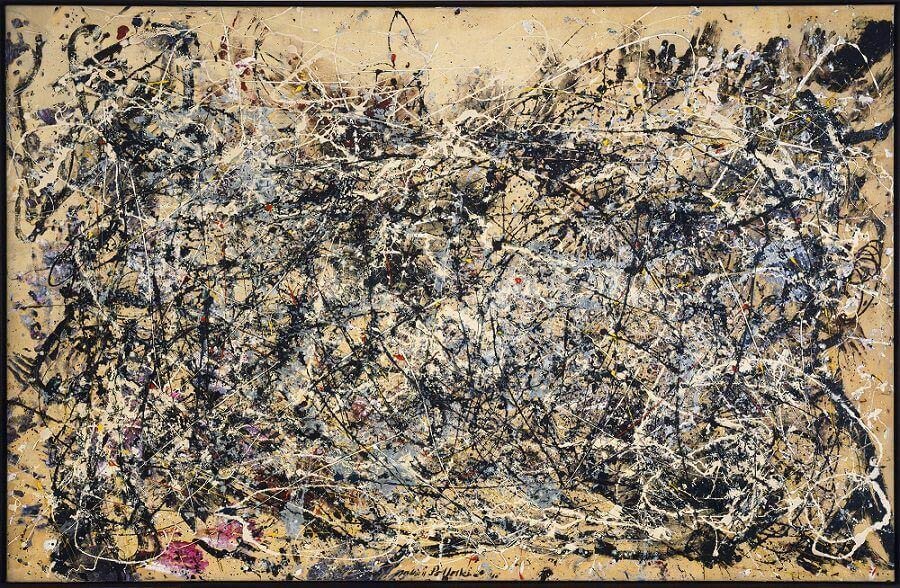
2. “No. 5, 1948” (1948)
One of his most famous works, “No. 5, 1948,” is a large canvas covered in thick layers of tan, yellow, white, and black paint. The intricate web of drips and splatters creates a sense of depth and movement, drawing the viewer into its complex interplay of colors and textures.
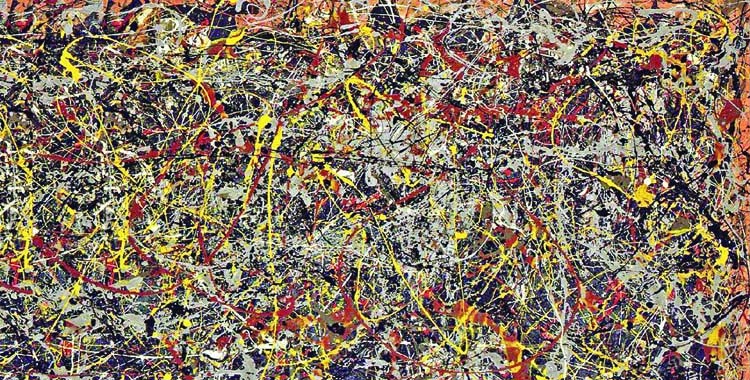
3. “One: Number 31, 1950” (1950)
This painting is often considered one of Pollock’s masterpieces. It showcases his mature drip technique, with a dynamic interplay of black, white, and earthy tones. The composition is both chaotic and harmonious, demonstrating Pollock’s mastery of controlled improvisation.

4. “Autumn Rhythm: Number 30” (1950)
In “Autumn Rhythm,” Pollock’s use of sweeping, rhythmic lines and muted colors evokes the natural world. The painting’s title reflects the seasonal theme, and the fluid, organic forms suggest the changing patterns of nature.
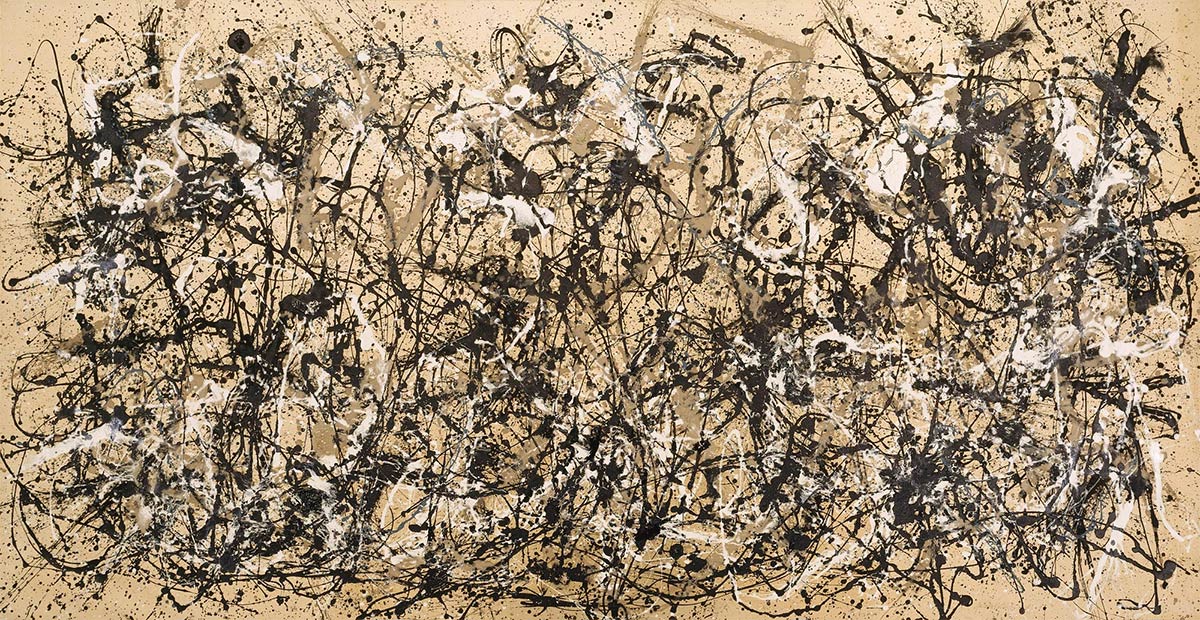
5. “Convergence” (1952)
“Convergence” is a bold and vibrant work, featuring a tumultuous mix of colors and energetic brushstrokes. The painting is notable for its complexity and intensity, reflecting Pollock’s emotional and psychological depth.
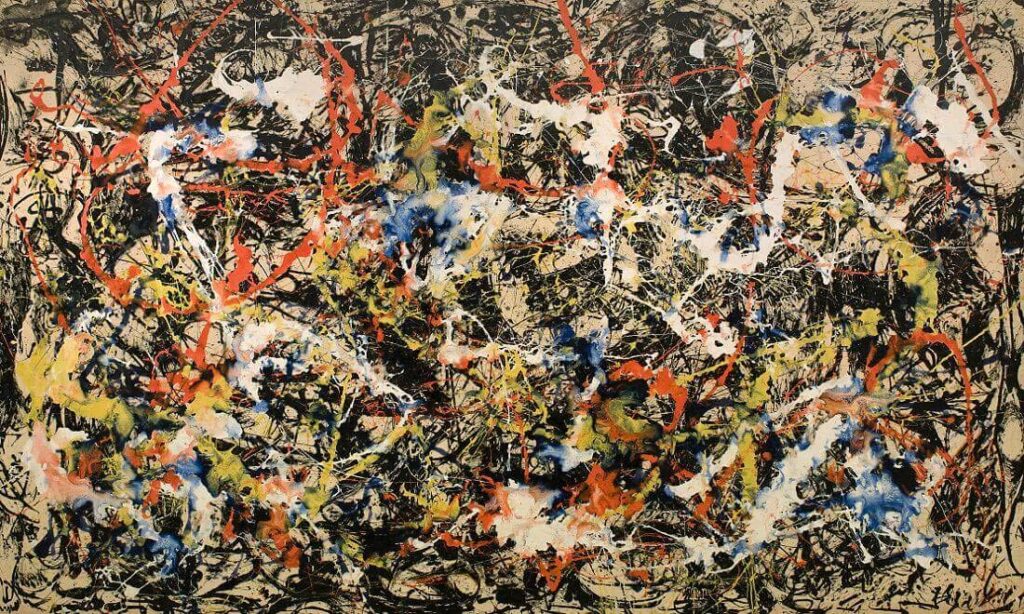
Critical Reception and Legacy
Pollock’s work received mixed reactions during his lifetime. While some critics praised his innovative techniques and emotional intensity, others dismissed his paintings as chaotic and lacking in skill. However, his influence on the art world was undeniable.
In 1949, Life magazine featured Pollock in an article titled “Is He the Greatest Living Painter in the United States?” This publicity brought him national fame and cemented his status as a leading figure in Abstract Expressionism.
Pollock’s paintings challenged traditional notions of art and opened new possibilities for artistic expression. His emphasis on process, materiality, and the physical act of painting influenced a generation of artists and laid the groundwork for movements such as Action Painting and Color Field Painting.
Personal Struggles and Later Years
Despite his success, Pollock struggled with alcoholism and bouts of depression throughout his life. His personal demons often affected his work, and his later years were marked by a decline in artistic output.
In the early 1950s, Pollock’s style began to shift. He experimented with black enamel on unprimed canvas, creating more controlled and linear compositions. Works like “Echo: Number 25, 1951” reflect this change, featuring a more subdued and introspective approach.
Pollock’s marriage to artist Lee Krasner also played a significant role in his life and career. Krasner, an accomplished painter in her own right, provided emotional and professional support. She managed Pollock’s career, organizing exhibitions and dealing with galleries. Their relationship was both collaborative and tumultuous, marked by mutual influence and personal conflict.
Death and Posthumous Recognition
Tragically, Jackson Pollock’s life was cut short when he died in a car accident on August 11, 1956, at the age of 44. His death marked the end of an era, but his legacy continued to grow.
After his death, Pollock’s work gained even greater recognition. Retrospectives and exhibitions at major institutions, such as the Museum of Modern Art in New York, solidified his place in art history. His innovative techniques and bold artistic vision inspired subsequent generations of artists, cementing his status as a pivotal figure in modern art.
Influence on Contemporary Art
Pollock’s impact extends beyond the realm of Abstract Expressionism. His emphasis on the process of creation influenced the development of various art movements, including Minimalism, Conceptual Art, and Performance Art. Artists like Robert Rauschenberg, Cy Twombly, and Allan Kaprow drew inspiration from Pollock’s approach to materials and the act of painting.
Moreover, Pollock’s work has been the subject of extensive academic study and critical analysis. Art historians and scholars continue to explore the psychological, philosophical, and cultural dimensions of his paintings, offering new insights into his artistic practice and its broader implications.
Conclusion
Jackson Pollock’s contributions to Abstract Expressionism and modern art are immeasurable. His innovative drip technique, emphasis on spontaneity, and exploration of the subconscious revolutionized the art world and left an indelible mark on the history of art. Through his most notable works, such as “No. 5, 1948,” “One: Number 31, 1950,” and “Autumn Rhythm: Number 30,” Pollock challenged conventional artistic boundaries and inspired a new generation of artists to explore the depths of abstraction and self-expression. His legacy continues to resonate, reminding us of the transformative power of art.


